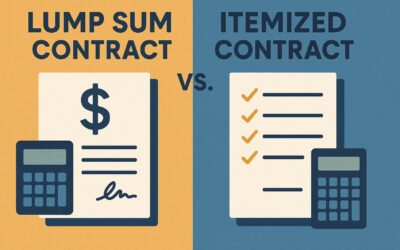Ensuring the safety of your home and loved ones is a top priority for homeowners. As we continue to adapt to the challenges of modern life, it is becoming increasingly important to take measures to prevent accidents and emergencies. One such preventative measure that can be easily implemented is the installation of fire alarm systems. The primary purpose of these systems is to ensure fire safety for you and your property. They notify you as soon as fire, smoke, or carbon monoxide is detected to help you take early action before the fire burns your entire house. One of the most widely used fire alarm systems is the smoke detector.
Smoke detectors (also known as smoke alarms) are devices that detect smoke and alert occupants of a potential fire, giving them time to evacuate and call for help.
In this article, we will delve into the specifics of smoke detectors, smoke detector types, and all you need to know before buying a smoke detector for your home.
Types of Detectors in Fire Alarm Systems
Before jumping into the main topic it is a good idea to get familiar with different fire detectors you can use for your home to enhance fire safety.
1. Smoke Detectors
Smoke detectors are devices that detect smoke in the air and raise an alarm. There are two main types of smoke detectors: ionization and photoelectric. Ionization smoke detectors contain a small amount of radioactive material that ionizes the air in the detector. When smoke enters the detector, it interrupts the ionization process, and the alarm goes off. Photoelectric smoke detectors, on the other hand, use a light source and a sensor to detect smoke particles. When smoke enters the detector, it scatters the light beam, and the alarm sounds. Both types of detectors are effective at detecting fires, but they respond differently to different types of fires. For maximum protection, it is recommended to install both types of detectors in your home.
2. Heat Detectors
Heat detectors are devices that detect increases in temperature caused by a fire. They are of two types: fixed-temperature and rate-of-rise. Fixed-temperature heat detectors operate when a specific temperature is reached, and they are best suited for areas with a constant heat source such as kitchens. Rate-of-rise heat detectors, on the other hand, detect rapid increases in temperature and are best suited for areas such as storage rooms or garages. Unlike smoke detectors, heat detectors do not detect smoke and therefore are not suitable for all areas of the home.
3. Carbon Monoxide (CO) Detectors
Carbon monoxide detectors are devices that detect the presence of carbon monoxide gas in the air. Carbon monoxide is a byproduct of incomplete combustion, and it is odorless, tasteless, and colorless, making it difficult to detect without a CO detector. CO detectors are usually used in conjunction with smoke detectors to provide comprehensive fire protection. They can be powered by batteries or be hardwired into your home’s electrical system. In addition to providing protection from fires, CO detectors can also alert you to other sources of CO, such as faulty gas appliances or blocked chimneys.
In this article, we are going to talk specifically about smoke detectors.
How Smoke Detectors Work
The first question that comes to mind is how smoke detectors help you in keeping your home safe from fire. Smoke detectors work by sensing the presence of smoke in the air. When smoke enters the sensing chamber of the detector, it triggers an alarm, which alerts people in the vicinity of the potential fire hazard. This early warning can give people time to evacuate the building or take appropriate measures to contain the fire before it spreads.
Smoke detectors are an essential component of home fire safety. They can detect smoke and fire in their early stages, which is crucial because fires can spread quickly, making it difficult to evacuate or extinguish the flames. In fact, according to the National Fire Protection Association, having a working smoke detector in your home can increase your chances of surviving a fire by 50 percent.
Types of Smoke Detectors
Smoke detectors could be in each of the following categories according to their sensor type.
1. Ionization
The most common type of smoke detector is the ionization smoke detector. It contains a small amount of radioactive material that ionizes the air between two metal plates and creates an electric current. When smoke particles enter the detector, they disrupt the ionization process resulting in reducing the amount of current, which triggers an alarm (see Figure 1). This type of detector is most effective at detecting fast-burning fires, such as those caused by paper or wood.
Figure 1
2. Photoelectric
Another type of smoke detector is the photoelectric smoke detector. It uses a beam of light that is directed into a sensing chamber. When smoke particles enter the chamber, they scatter the light, which triggers an alarm (see Figure 2). This type of detector is most effective at detecting smoldering fires, such as those caused by cigarettes or electrical wiring. This smoke detector is more expensive than the ionization type.
Figure 2
3. Dual-Sensor
Some smoke detectors use a combination of ionization and photoelectric technologies to provide more comprehensive coverage. Dual-sensor smoke detectors are designed to provide the benefits of both ionization and photoelectric technologies. Using this smoke detector you can get an alarm that is responsive to both flaming fires and smoldering fires. Therefore, it gives the best protection against fire.
In addition to these detection methods, some smoke detectors are equipped with additional features, such as carbon monoxide sensors, wireless connectivity, and smart features. These features can enhance the effectiveness of the smoke detector and provide additional safety benefits. In the next section, we will explore these features.
Smoke Detector Additional Features
Smoke detectors might come with interesting features that make them more functional. Knowing these features helps you to find out which smoke detector works best for you when buying one. The most interesting features are as follows:
1. Multi-Sensor
A combination fire alarm system may include smoke, heat, and carbon monoxide sensors or two of them. These alarms are usually mounted on the ceiling or high on the wall and may resemble regular smoke alarms. These alarms reduce the number of detectors needed to be installed.
2. Intelligent
There are advanced smoke alarms called multicriteria or intelligent alarms that can detect fires using various sensors such as photoelectric, ionization, and heat in combination with an algorithm. The advantage of these alarms is that they are less likely to produce false alarms from non-fire sources, such as cooking. However, it does not necessarily mean that these alarms are better at detecting fires earlier than other types of alarms.
3. Conventional
This type of system is made up of multiple fire detectors that are wired to a central control panel. When a detector is triggered, the control panel shows the zone where the fire was detected.
4. Addressable
This system is similar to the conventional system, but each detector has its own unique address. This allows the control panel to provide more detailed information about the location of the fire, making it easier for firefighters to respond quickly.
5. Voice Evacuation
This system includes speakers and pre-recorded voice messages that guide people to safety in case of a fire. It is commonly used in large buildings like hotels and hospitals.
6. Aspirating Smoke Detection
This type of system uses a network of pipes and a central detection unit to continuously draw in air samples from various parts of a building. It can detect the presence of smoke at an early stage, making it a good option for areas with high ceilings or hard-to-reach spaces.
Where Should Smoke Detectors be Installed in a Home?
The National Fire Alarm and Signaling Code, known as NFPA 72, specifies where smoke detectors should be placed in homes. These areas include:
- Inside every sleeping room.
- Outside each sleeping area near the bedrooms.
- On every floor of the house, including basements and habitable attics. If there are split levels without a door, a smoke alarm on the upper level is sufficient for the lower level. However, this is only applicable if the lower level is less than one full story (floor level) below the upper level.
- In a room where a loft is open.
- In napping areas for children.
- In hallways and rooms where the ceiling height exceeds the hallway by 24 inches or more.
However, smoke detectors should not be placed in certain areas. This includes the kitchen, as there may be false alarms due to burnt food, and the garage, due to temperature fluctuations. They should also not be placed in front of air registers, open windows or doors, or in attics, bathrooms, inside air ducts, unheated buildings, or motor homes where the temperature may exceed 32 to 100 degrees F.
Figure 3
Considerations for Locating Smoke Detectors
There are a few important considerations for locating smart detectors in your home that you need to keep in mind.
- If you have to place a smoke alarm in your house near the kitchen or bathroom door, there are a few things you can do to prevent it from going off when you do not want it to. To avoid false alarms caused by cooking, you should put the alarm at least 20 feet away from the stove or other cooking equipment. However, if the alarm is a photoelectric type, has a button to silence it, or is designed to withstand smoke from cooking, you can put it as close as 10 feet (3.0 meters) away from the cooking area (see Figure 4).
Figure 4
- When placing a smoke detector in the hallway near the bathroom with a shower, make sure it is placed at least 36 inches (910 mm) away from the door to prevent steam from the shower from triggering the alarm.
- For best results, mount smoke alarms high on walls or ceilings, since smoke rises. If you are installing a wall-mounted alarm, make sure it is no more than 12 inches (300 mm) from the ceiling (see Figure 5).
Figure 5
- If you have sloped ceilings, place the alarm within 36 inches (910 mm) of the highest point, but not right at the top (which is 4 inches (100 mm) down from the peak) (see Figure 6).
Figure 6
- Avoid installing smoke detectors near windows or where there is air movement, like near vents from an HVAC system.
- It is important to have a well-rounded smoke detection system in your home that includes both plug-in and battery-operated smoke detectors.
- In addition to the basic system, you can enhance your smoke detection by adding heat detectors or more smoke detectors. Some areas to consider installing heat detectors include the kitchen, dining room, furnace room, attic, garage, and utility room.
Power Options
Generally, smoke detectors can get their power either from batteries or the home’s electrical wiring.
1. Batteries
There are smoke alarms that rely on replaceable batteries for their power source (see Figure 7). These batteries can come in different types like 9v, AAA, or AA. It is important to replace these batteries at least once a year and to test the alarm every month.
Figure 7
According to NFPA 74: Recommended Good Practices for the Installation of Automatic Fire Alarm Systems for Private Dwellings, battery-operated smoke detectors must meet certain requirements. These include:
- The ability to produce an alarm sound of 85 decibels continuously for four minutes.
- Having batteries that can provide power for at least a year.
- The ability to give a distinctive trouble signal for seven consecutive days before running out of power.
- The ability to produce an alarm sound for four minutes during the seven days of trouble signal.
Some smoke alarms come with a battery that is sealed and non-replaceable. This battery can provide power to the smoke alarm for up to 10 years. This means that you do not have to replace the batteries for the life of the alarm. However, it is still important to test the alarm monthly to ensure that it is working properly.
2. Hardwired
Some smoke detectors are powered by the home’s electrical system (see Figure 8). You can connect them to either a dedicated circuit or the lighting circuit. These detectors could also have a battery backup. The backup battery can either be a replaceable battery that needs to be changed at least once a year or a sealed battery that lasts for 10 years and does not need to be replaced.
Figure 8
According to NFPA 74: Recommended Good Practices for the Installation of Automatic Fire Alarm Systems for Private Dwellings, hardwired smoke detectors must meet certain requirements. These include:
- The ability to produce an alarm sound of 85 decibels continuously for four minutes.
- A visible Power On indicator must be present.
- Electrical systems that are meant to be installed by non-electricians must be powered by a source that does not exceed 30 volts, and should comply with the requirements for power-limited fire-protective signaling circuits as outlined in Article 760 of the National Electric Code No. 70.
- The power source for the detector should not be connected to a wall switch that can be turned off.
- Any loss or restoration of power should not trigger an alarm signal.
- To prevent accidental disconnection, a restraining means must be used at the plug-in of any cord-connected installation.
- Finally, smoke detectors powered by 120 VAC sources should not be installed on circuits protected by a ground fault circuit interrupter, whether they are single-station or multiple-station.
Buying Smoke Detectors
When purchasing a smoke detector, you need to research and select a high-quality, reliable device that will adequately protect your home and family. Consider factors such as testing, warranties, and compatibility with your home’s wiring before making a purchase. Additionally, it can be helpful to consult reviews from other homeowners to get an idea of which products are popular and effective. Here are some tips to help you make a wise purchase:
- Do not let salespeople pressure you into buying without doing research. Get estimates from multiple manufacturers before making a decision.
- Test the smoke detectors as you install them, or make sure the installer tests them in your presence.
- Request an instruction manual that gives you information on how to operate, test, and maintain the alarms.
- Understand the guarantee or warranty with the unit you select and know who will repair or replace the unit if it is defective.
- Make sure the alarm you buy has been tested by a recognized testing laboratory like Underwriters Laboratories (UL) or Intertek.
- Look for hard-wired smoke alarms if your home already has hard-wired connections.
According to HomeDepot, some of the most reviewed smoke detectors are the Kidde Firex Smoke Detector, Hardwired with nine-V Battery Backup & Front-Load Battery Door, Smoke Alarm, 4-Pack with 3,830 reviews, and the Kidde 10 Year Worry-Free Smoke Detector, Lithium Battery Powered, Smoke Alarm, 3-Pack with 3,369 reviews.
Conclusion
In conclusion, smoke detectors are a fire alarm system that can save lives in the event of a fire. It is important to make sure you have smoke detectors installed in every room of your home and that they are in good working condition. By taking steps such as testing your smoke detectors regularly and practicing fire drills with your family, you can help ensure that everyone in your home is prepared in case of an emergency. Remember to also take other fire safety measures to further protect your home, such as keeping flammable materials away from heat sources and ensuring your electrical appliances are in good working condition. By prioritizing fire safety in your home, you can help ensure the safety and well-being of yourself and your loved ones.
At Matrix Company Solutions Corp, we understand the importance of fire safety and the peace of mind that comes with knowing your home is protected. That is why we prioritize safety when renovating your home. Contact us today to learn more about how we can help you renovate your home and keep your home safe and secure.



![Top 20 Reasons for Failing a Plumbing Inspection in Philadelphia [2025 Guide]](https://matrixgc.com/wp-content/uploads/2025/05/Common-issues-causing-failing-a-plumbing-inspection-in-Philadelphia.png)




0 Comments